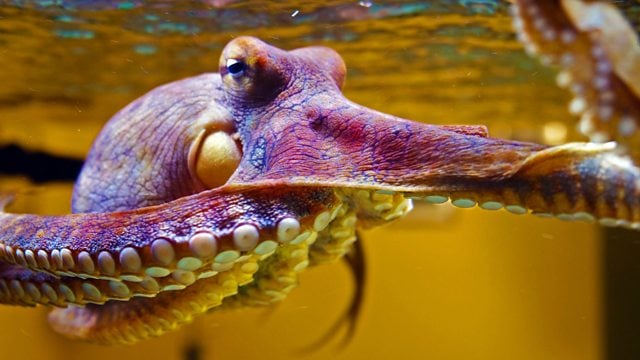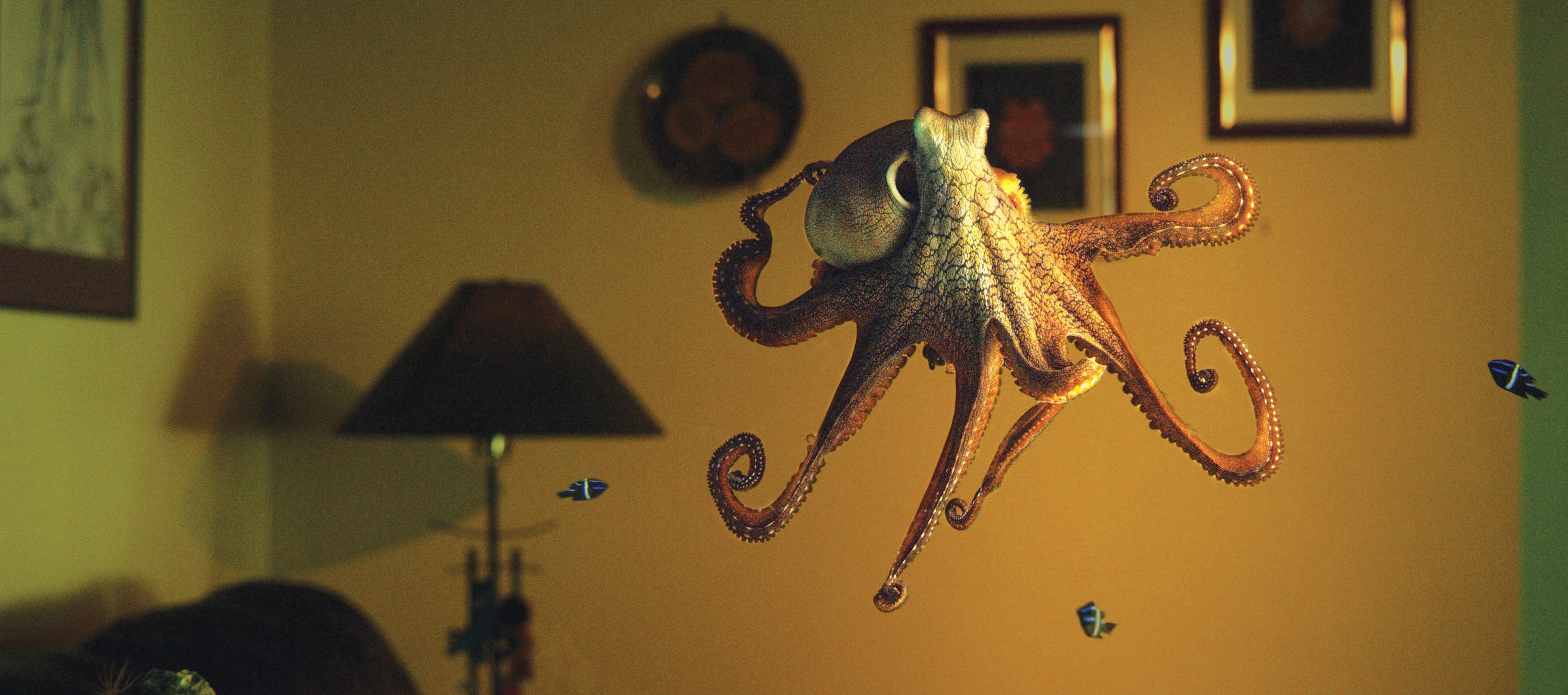
Octopuses in the wild have often been observed changing their skin color and texture to avoid predators or to catch unsuspecting prey. Now, for the first time, a researcher has captured a spell-binding video of a cephalopod called Heidi rapidly changing into a multitude of colors while sleeping.
The footage, part of Octopus: Making Contact, a documentary that premiered on PBS on October 2, 2019, was captured by David Scheel, who has raised Heidi in a home aquarium since she was young. The professor at Alaska Pacific University in Anchorage believes that the octopus — whose skin went from pale gray to ghostly white to deep, dark violet, before transitioning into a blotchy, greenish-brown camouflage pattern — was dreaming of catching her next meal.

"She's asleep; she sees a crab, and her color starts to change a little bit," Scheel says in the video. "Then she turns all dark. Octopuses will do that when they leave the bottom." He adds, "This is a camouflage like she's just subdued a crab, and now she's going to sit there and eat it, and she doesn't want anyone to notice her. If she's dreaming, that's the dream." Scheel's theory about Heidi's delectable dream stems from the fact animals with the ability to camouflage have never been observed changing colors so abruptly while sleeping.
The hour-long documentary, which tracks Scheel's evolving relationship with the octopus, also showcases Heidi's other talents. She enjoys playing with small toys, watching television — particularly The Big Bang Theory — and solving puzzles. The talented cephalopod can also escape from small spaces, use tools, and even pull on a string to activate a buzzer. Like any smart family pet, Heidi recognizes Scheel and his teenage daughter Laura and excitedly rushes to her tank's side in greeting every time either comes close.
Resources: Huffpost.com, Cnet.com, Popularmechanics.com
